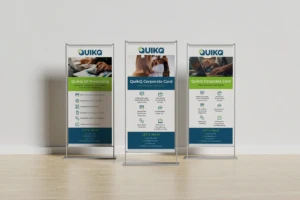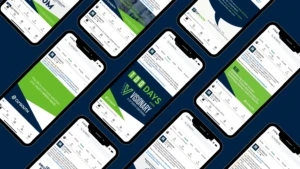Myself, along with 15 fellow panelists, recently shared 16 easy, effective tips for making customers feel valued. There are some great suggestions in the article, from offering payment flexibility during uncertain times to asking clients specific feedback questions.
The tip I shared is all about building client strategies based on each client’s unique needs and the positive outcomes that happen as a result. This ethos is something that we practice and hold in high regard at Brand825, for many reasons.
Arguably, the most important reason is the lack of a “one-size-fits-all” strategy for building a brand, creating content, building websites, or anything else we do at this company to help our clients engage and inspire. Creating distinctive client strategies is a notion that not only works well in marketing, but can help companies succeed in every industry.
That’s why in today’s society, where the competition to attract new customers is more cutthroat than it has ever been, businesses have to find a way to cut through the noise and deliver something unique and authentic. Here’s how to do it:
Step 1: Listen
Communication is the key to forming and maintaining strong relationships with spouses, friends, co-workers and, you guessed it, clients. There is simply no way to know what your clients need unless you ask them … and listen carefully to what they share with you.
Check in with current clients to see how they’re doing without hitting them with a sales pitch. Show them you genuinely care about their business, ask if they need anything, and make sure they are comfortable sharing feedback of all kinds with you. An honest conversation could lead to positive modifications to your existing strategy.
When it comes to potential clients, try to sit down with them early on and have a conversation about what they want to accomplish, where they want to go and how you can help get them there. Ask what their challenges have been in the past and what they are today. Diagram their pain points so you can offer the right solutions to alleviate them.
Opening the lines of communication early and often demonstrates your willingness to go above and beyond for your client, and they will appreciate it.
Step 2: Execute
Once you’ve obtained the information you need to build the strategy, it’s time to start filling in the blanks.
Every client strategy should begin with clearly defined goals and objectives. Does the client want to boost revenue? Increase market share? Create and sell a specific number of widgets? Hopefully, your client highlighted some objectives in the first step. If not, no big deal. Reach out to your client and work with them to ensure everyone is on the same page.
Next, you can start building out specific success factors (or key results) based on those objectives. A success factor is a specific pursuit you can measure over time. For example, if your client’s objective is to spend less money attracting new customers, a possible success factor could be to reduce customer acquisition cost by 5 percent over 12 months.
With objectives and success factors in writing, you can begin to tailor your deliverables and build a customized strategy your client will feel good about. In addition, collaborating with your clients to identify and refine objectives and success factors is an important piece of relationship building, one that helps build trust and faith.
Step 3: Learn
The one thing you can depend on in business is that things change, and for that reason, client strategies can’t be set in stone.
You can’t know if your strategy is working unless you’re monitoring and tracking everything. Data doesn’t lie, so make sure you’re learning everything you can from it. Keep a constant watch on what’s working well and what could have the potential to misfire.
You need to be able to adapt when necessary and change on the fly, and it’s a lot easier to do this if you know the facts and have open and honest communication with your clients. Be just as upfront with your clients about the things that are working as you are with the things that aren’t working. Based on my experience, clients appreciate this kind of candor.
Customizing your strategies based on a client’s unique needs is the best way to ensure successful outcomes and a fruitful working relationship.
Kedran Whitten, Brand825’s co-founder, has more than 28 years of marketing leadership experience at the SVP and CMO levels, including revenue growth, customer satisfaction, brand awareness, etc. When she’s not helping brands be their best, Kedran can be found jumping out of planes, at Tennessee Titans games and watching her two boys crush it on the baseball diamond.



